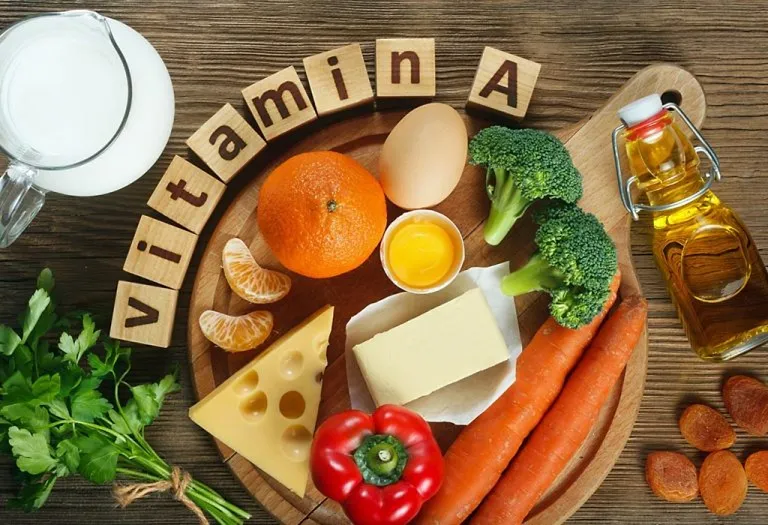Understanding Baby Food Labels – Easy Guide for Parents on How to Read & Use

- What Are Food Labels?
- Things to Look Out on Nutrition Facts Label
- Manufacturing, Expiration, Best-Before & Use-by Dates on Food Labels
- What Do Food Labels Claim?
- How to Avoid Allergies By Reading Food Labels?
- How to Use the Percentage % Daily Value on Food Labels?
- Guide to Reading Ingredient Lists for Healthier Food Choices
- Which Food Additives Can Affect Your Child?
- Nutrition Labels on Front and Side or Back-of-Package
- Nutrition Information Panels (NIP)
- Shopping Tips for Food Products
- FAQs
Are you an informed parent who makes their food choices by reading the ingredients and nutrition facts label at the back or the one who picks items from the shelves influenced by the front claims and discounts? Our point is that if you are being the latter, you are missing a load on your family’s health and safety by not reading food labels. With more and more consumers becoming health-conscious, manufacturers are getting one step ahead by tweaking information and convincing people to buy their ultra-processed products. This is where knowing how to correctly read food labels help so you can make an informed choice for your sunshine’s health and safety.
What Are Food Labels?
A food label or nutrition label is an important piece of information printed on the packaging of the product. It provides consumers with useful information about the product, from what it contains to how long it is safe for consumption so that consumers can make the right choice and safeguard their health. Almost all FMCG products are required to have labels, but the information and format may vary depending on the type.
Food labels at the front, side, or back of the packaging boast information, including:
- The type of food
- Manufacturers’ and marketer’s details and address
- Ingredients
- Nutrition information
- Allergens and additives
- Weights and measures of product
- Manufacturing date
- Validity for consumption
- Directions for use and storage
- Any nutrition and health claims
Things to Look Out on Nutrition Facts Label
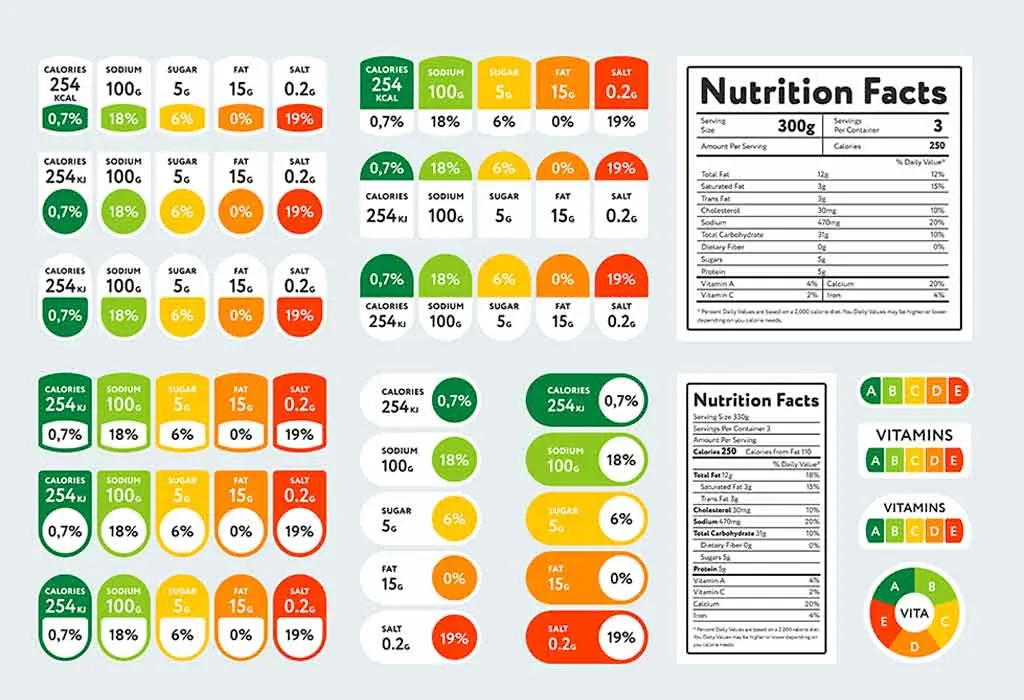
Centers for Disease Control and Prevention (CDC) says that a nutrition facts label helps anatomise information about the vitamins, fats, calories, etc., per serving, making it easier for parents to compare the nutrition provided by similar products. For instance, if you are looking to buy tomato ketchup, you may compare the food ingredient list on food label, such as sugar content and calories, to make the right choice.
However, decoding nutrition facts labels can be tricky. Here’s what you should check in the nutrition labels for food. (1) (2) (3) (4) (5) (6).
1. Serving Size and Calories
It’s important to pay attention to the serving size and the number of calories listed. These values are usually highlighted to show their significance and prevent unintentional calorie consumption.
For example, if a small bag of potato chips says it has 100 calories per serving, which may be 10 grams or 100 grams, you might think the whole bag is one serving. But sometimes, the bag actually contains more servings than you might expect. So, if you eat the entire bag, you’re actually consuming more calories than you realise.
2. Total Carbohydrates
Carbohydrates provide energy. The total carbohydrates include total sugars, added sugars, and fibre. Look for products with sugars, especially added sugars. If the quantity of added sugars is more, avoid that product.
3. Added Sugars Underneath the Section of Total Sugars
Many processed foods these days have added sugars in addition to natural sugar. Knowing the existence and amount of added sugar when you are concerned about your child’s health can help a lot when buying.
For instance, plain yogurt may contain 10 grams of Total Sugar per cup with zero Added Sugars. At the same time, a blueberry-flavoured yogurt may contain 20 grams of Total Sugar with 10 grams of Added Sugar.
4. Fats
Fats provide energy. In a label, the Total Fats indicate the amount of fat in a single serving of food. Total Fats are categorised under trans fats (bad for health), saturated fats (bad for health), and unsaturated fats (good for health). Avoid products with high trans fats or saturated fats.
5. Sodium
Sodium is an element found in salt. It helps with fluid balance is the body, but the excess can cause high blood pressure. Since foods also have naturally occurring sodium in them, look for foods with less sodium content.
6. Dietary Fibre
Dietary fibre plays a huge rule in maintaining gut health and bowel movement. It also helps lower cholesterol and the risk of colon cancer. Select foods that are rich in fibre.
7. Protein
From muscle and organ building to keeping the immune system intact, protein makes up most of the body. Select foods rich in protein.
8. The % Daily Value
The Daily Value (DV) tells how much of a certain nutrient you should consume daily. When you see a Percent Daily Value (%DV) listed on food packaging, it shows you the proportion of that nutrient present in one serving of the food compared to your daily requirement.
For example, if a food item has a Daily Value of 20% for iron, it means that one serving of that food provides 20% of the iron you need in a day. So, checking the %DV can help you understand how much of a nutrient you’re getting from the food you eat.
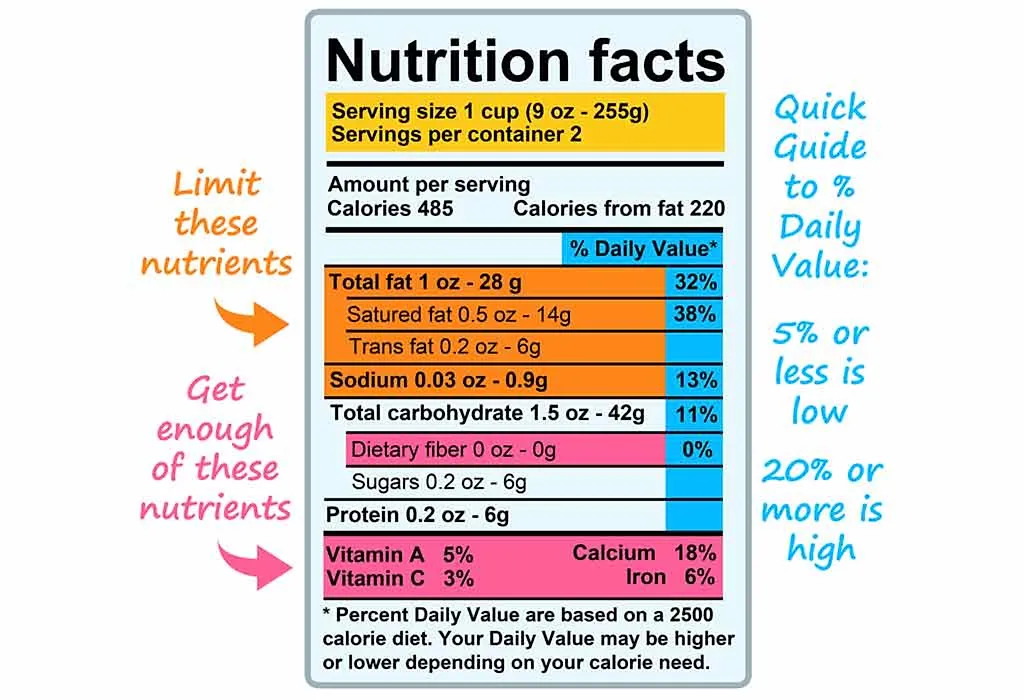
9. What to Limit and What to Take
Total Carbohydrate uncovers sugar and fibre content. You should buy food that has more fibre, vitamins, and minerals in its nutrition facts label and avoid that is low in calories and high in sodium, saturated fat, trans fat, and added sugars.
The expert Dr. Minal Acharya says, “Consciously reading the food labels before making food purchases is an important aspect of healthy eating. As per the findings of the survey by the National Institute of Nutrition, most consumers prioritise brand name over nutritional value when making food purchasing decisions. This highlights the need for increased education and awareness regarding the significance of reading and comprehending food labels to make informed dietary choices.”
Manufacturing, Expiration, Best-Before & Use-by Dates on Food Labels
Ever felt confused when sometimes it is ‘Best Before’ and sometimes it is ‘Use By?’ We’ve been there, too. Food safety labelling requires manufacturers to provide date for foods with a shelf life of less than 2 years to help consumers know when the food is safe and unsafe. Let’s break down the terminology.
1. Use By
Use by date on food labels refers to the date till which the food is safe to consume. Foods cannot be sold once the use by date passes. This type is usually used for perishable goods, like meat, fish, and dairy.
2. Best Before
According to Harvard, the ‘best before’ date tells you the date by which food is at its good quality if stored in the recommended way (3). Even after the best-before date, the food might still be okay to eat, but it might not taste as good or have all its nutrients.
Stores can sell products after the best-before date if they’re still safe to eat (7).
3. Packaged On
‘Packaged on’ or ‘Baked on’ is typically used for highly perishable goods like bread to indicate its freshness.
What Do Food Labels Claim?
Manufacturers often lure customers by making the front packaging attractive and adding claims like ‘100% cholesterol–free,’ ‘organic,’ ‘fat-free,’ ‘high fibre,’ ‘low sodium,’ ‘reduced fat,’ and more. Food and Drug Administration controls some of the common claims, and manufacturers must abide by the guidelines to make attractive claims (8) (9) (4).
- ‘Cholesterol-free’ means there’s no cholesterol in the product, but it could still have fat.
- ‘Fat-free’ means there’s very little fat, less than 0.15%.
- ‘Lite or light’ might just mean it’s light in flavour or texture, so it’s important to check the fat content.
- ‘Organic or certified organic’ means different groups check and approve it as organic, but their rules might vary.
- ‘Oven baked, not fried’ could still have fat from spraying or coating of oil.
- ‘Reduced fat or salt’ means it has at least 25% less fat or salt than the original, but it might still be high in those.
- ‘Sugar-free or no added sugar’ means it doesn’t have table sugar but could still have other sugars like stevia or be high in calories, salt, or fat.
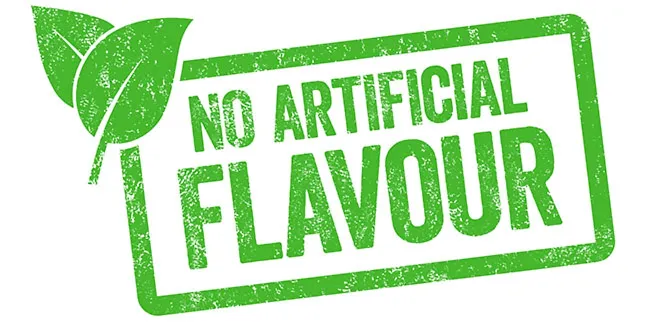
How to Avoid Allergies By Reading Food Labels?
The authorities require manufacturers to mention food allergens that have been used or exposed in their products’ food allergy labels, even if the amount is minimal. Many children develop intolerance or allergies toward certain products. Reading this will help mitigate the instances.
Common food allergens as per the FDA include (10):
- Milk
- Wheat
- Fish
- Peanuts
- Tree nuts
- Shellfish
- Eggs
- Soybeans
- Lupin
- Sesame
The information can be presented in different ways, like:
- Contains egg
- Albumin (egg)
- Whey protein
- Contains casein – refers to the milk protein
- May contain traces of – a warning if the food is prepared in the same equipment as with food allergens
- May contain milk
If your child is allergic or intolerant to any of the food allergens or you have a family history of allergies, it is always better to consult your paediatrician or dietician to find out about the hidden ingredients and what foods to watch out for while label reading.
How to Use the Percentage % Daily Value on Food Labels?
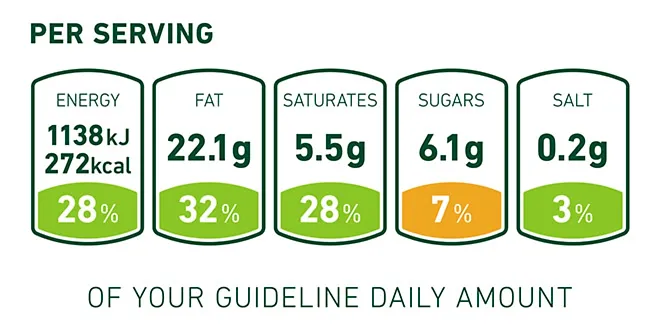
As we mentioned before, the per cent Daily Value (%DV) shows you how much of that nutrient you’re getting from that food compared to what you need for the whole day. So, if you see something with a ‘20% DV’ for calcium, it means that serving gives you about a fifth of the calcium you need for the day.
Remember to check the percentage labelling of the characterising ingredient(s) or component(s) on the back of the product when comparing food labels. For example, a packet of cupcakes might say 45% milk solids, while another might say 75% milk solids.
Here’s the trick according to the Food Safety and Standards Authority of India (FSSAI) and Harvard (3) (2):
- If a food has 5% or less of the Daily Value for a nutrient, it’s not giving you much of that nutrient. In this, all the baddies like trans fats and sodium should come.
- If it has 20% or more, it means it is high in that nutrient. Look for calcium and vitamins in this percentage.
Compare the % Daily Value for similar foods, and decide.
| 5% Daily Value or less | 20% Daily Value or more |
| Aim for this percentage if planning a heart-healthy diet | Aim for this percentage if planning for good bone health and structure |
| Saturated fats | Calcium |
| Trans fats | Fibre |
| Sodium | Iron |
| Cholesterol | Vitamins A and C |
| Potassium |
Guide to Reading Ingredient Lists for Healthier Food Choices
Manufacturers may play wisely when marketing products as ‘healthier’ and ‘less sugar’, all the while including a different form, like dextrose or monosaccharides, that may contribute to fats and sugars in products. Screenshot the chart below, keep this handy while shopping, and become a labelling wizard (7).
| Saturated and other added fats | Sugars | Salt |
| (terms like ‘oven fried,’ ‘baked,’ or ‘toasted’ imply that fat is used in the food preparation) | (Look for ingredients ending in ‘-ose’ or ‘-tol’) | |
| Beef fat | Sucrose | Sodium |
| Butter | Sorbitol | Rock Salt |
| Mayonnaise | Dextrose | Sea salt |
| Coconut | Fructose | Seasoning |
| Coconut oil or palm oil | Glucose | sodium bicarbonate |
| Cream | Brown sugar | monosodium glutamate (MSG) |
| Vegetable oils and fats | Corn syrup | Garlic salt |
| Hydrogenated oils | Fruit juice concentrate/fruit paste | Onion salt |
| Egg | Deionised fruit juice | sodium metabisulphate |
| Mono-, di- or triglycerides | Disaccharides | sodium nitrate/nitrite |
| Full-cream milk powder | Honey | Stock cubes |
| Sour cream | Lactose | Celery salt |
| Lard | Malt | Meat or yeast extract |
| Dipping | Molasses | Baking powder |
| Shortening | Maple syrup | Booster |
| Copha | Monosaccharides | |
| Xylitol | ||
| Golden syrup | ||
| Maltose | ||
| Mannitol | ||
| Raw sugar | ||
| Maltodextrin | ||
| Crystalline fructose | ||
| Galactose |
Which Food Additives Can Affect Your Child?
Food additives are extra ingredients put into food to improve their taste, quality, or shelf life. Additives added directly to products come under the ingredients, often with their chemical names, like sodium chloride for salt, ascorbic acid for vitamin C, or Blue #2 or Yellow #5 for artificial colours. Indirect additives used in processing or packaging, like plastic, dyes, and different types of coatings, can severely impact a child’s health.
The American Academy of Pediatrics (AAP) policy, ‘Food Additives and Child Health,’ has identified that many food additives may interfere with children’s hormones, growth, and development (11) (12).
| Chemical | Food-related Use | Health Issues |
| Synthetic artificial food colours (AFCs) | Food colour commonly used in children’s processed foods and beverages | Impacts children’s behaviour and attention |
| Nitrates and nitrites | Preservative and colour enhancer for meats, fish, and cheese | Carcinogenicity, thyroid hormone disruption |
| Bisphenol A (BPA) | Plastic containers and beverage cans | Imbalances nervous and immune systems, changes puberty timing, increases body fat |
| Phthalates | Clear plastic food wrap | Increases obesity, affects cardiovascular function, affects male genital development |
| Perfluoroalkyl chemicals (PFCs | Grease-proof paper and paperboard | Decreased birth weight, supresses immune system, increases obesity |
| Perchlorate | Food packaging | Thyroid hormone disruption |
Nutrition Labels on Front and Side or Back-of-Package
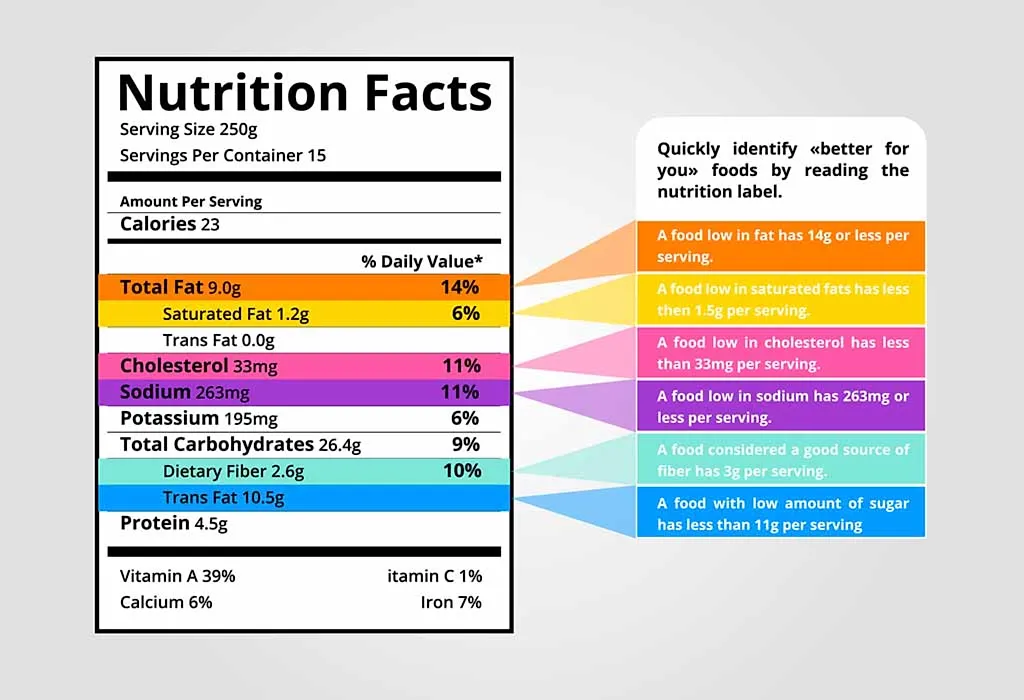
Before you get to reading food labels, you must know how the packaging of the product works.
1. Front of Packaging (FOP)
The front of the packaging is the influencing side of the product that prompts a purchase. Food manufacturers use eye-catching graphics and symbols to highlight their products’ health USPs, like ‘fewer calories’ and ‘low sugar’ to effectively target their customers.
2. Side and Back-of-Packaging
The side and back of packaging contains all sorts of information from ingredients and nutritional value label to allergy information, food license number, authority logo, and dates.
Nutrition Information Panels (NIP)
The nutrition information panel (NIP) is the tabular panel that includes food components — energy (kilojoules), total fat, saturated fat, protein, total carbohydrates, sugar, sodium, and sometimes fibre and calcium—in a standard per 100 grams or 100 ml weight or serving sizes. Please remember that serving sizes may vary with brands when comparing labels. The best choices generally have less bad stuff like saturated fat, sodium, and sugar, and more good stuff like fibre.
Shopping Tips for Food Products
Understanding nutrition labels is not rocket-science. We have simplified some wise shopping tips to ensure a healthier you:
- Don’t get fazed by the front packaging and make decisions based on the food tags or claims at the front.
- Take a quick look at the nutrition labels. Look out for details about energy, fat, saturated fat, sugars, and salt.
- Many labels use colours like red, amber, and green: green means good to go, amber means okay, and red means stop or be cautious. So, aim for more greens and ambers and fewer reds for a healthier choice.
- Be sceptical of products with a long list of ingredients, as they may contain many additives.
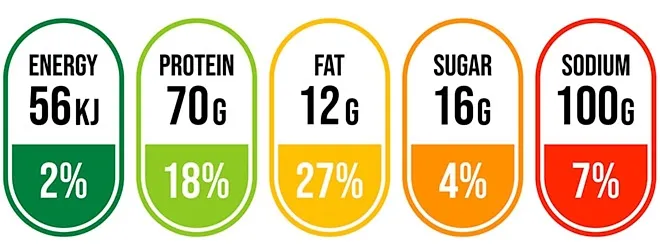
FAQs
1. What are compound ingredients?
Compound ingredients are those ingredients that are made up by a mixture of other ingredients. For instance, in a chocolate chip ice cream, ingredients may include milk, sugar, chocolate, and so on. If the chocolate is sourced directly, it will be listed as it is; if it is made by mixing ingredients, then it could be listed as Ingredients: milk, sugar, chocolate (cocoa powder, cocoa butter, sugar).
2. How does the ordering of the ingredients list work?
Ingredients are always listed in descending order of weight, so the most used ingredient comes first. If sugar and butter come first before flour in a brownie’s ingredient list, it means it is likely to be a high-fat brownie (13).
Disclaimer:
The content provided in the article is for educational purposes only and does not intend to provide personal medical advice. The information is sourced from several food authorities in different nations. The nutritional advice for food preparation and packaging may vary with different safety standards and statutory bodies. It is requested to take the above information for broader educational purposes and consult the authority or a doctor for any doubts you may have regarding a medical condition. Refrain from replacing or disregarding professional medical advice with the information provided here.
The nutrition label on food packages is designed to help us make informed choices about what we eat and drink. By paying close attention to the ingredients and staying up to date and open-eyed on food claims, food label nutrition facts, and allergen information, you can save a lot of trouble and ensure a healthier version of you and your family.
References/Resources:
1. Food Labels; CDC; https://www.cdc.gov/diabetes/managing/eat-well/food-labels.html
2. How to Read Labels; FSSAI; https://eatrightindia.gov.in/how-to-read-label.jsp
3. Understanding Food Labels; Harvard T.H. Chan; https://www.hsph.harvard.edu/nutritionsource/food-label-guide/
4. Reading Food Labels; Humana; https://kidshealth.org/HumanaLouisiana/en/parents/food-labels.html
5. Parent Tips: How to Use the Nutrition Facts Label; NIH; https://www.nhlbi.nih.gov/health/educational/wecan/downloads/nutritionlabel.pdf
6. Do You Eat Right; FSSAI; https://fssai.gov.in/upload/knowledge_hub/852185f89a7fc009c5Book_Do_You_Eat_Right_16_10_2020.pdf
7. Food labels; BetterHealth Channel; https://www.betterhealth.vic.gov.au/health/healthyliving/food-labels#what-are-compound-ingredients
8. Nutrient Content Claims; FDA Reader; https://www.fdareader.com/blog/2018/12/13/product-claims
9. Title 21; Code of Federal Regulations; https://www.ecfr.gov/current/title-21/chapter-I/subchapter-B/part-101/subpart-A#101.13
10. Food Allergies: What You Need to Know; FDA; https://www.fda.gov/food/buy-store-serve-safe-food/food-allergies-what-you-need-know
11. Food Additives: What Parents Should Know; American Academy of Pediatrics; https://www.healthychildren.org/English/healthy-living/nutrition/Pages/Food-Additives.aspx
12. Trasande. L, Shaffer. R. M, et al.; Food Additives and Child Health; AAP Publications; https://publications.aap.org/pediatrics/article/142/2/e20181408/37584/Food-Additives-and-Child-Health?autologincheck=redirected; August 2018
13. Food labels; NHS; https://www.nhs.uk/live-well/eat-well/food-guidelines-and-food-labels/how-to-read-food-labels/
Also Read:
Best Healthy Foods for Kids
Essential Nutrients Your Baby Needs
Baby Foods You Should Give Your Child
Was This Article Helpful?
Parenting is a huge responsibility, for you as a caregiver, but also for us as a parenting content platform. We understand that and take our responsibility of creating credible content seriously. FirstCry Parenting articles are written and published only after extensive research using factually sound references to deliver quality content that is accurate, validated by experts, and completely reliable. To understand how we go about creating content that is credible, read our editorial policy here.











